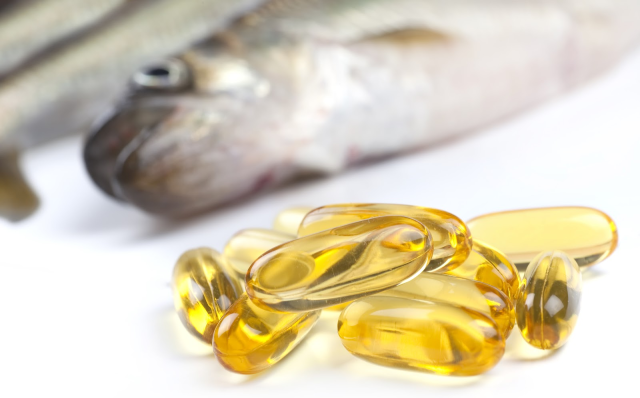With the popularity of the Atkins/Low Carb diet fading rapidly, it was only a matter of time before the next “big thing” came along to replace it. Enter: the Glycemic Diet.
The premise of the Glycemic Diet is simple: carbs are not the bad guys-it’s the TYPES of carbs you eat that are most important.
What Is It?
The Glycemic Diet is based on a scale called the Glycemic Index. The Glycemic Index (or G.I. for short) charts how quickly a food is converted into sugar in the body.
Foods that have a higher G.I. number are converted into sugar more quickly than foods that have a low G.I. number, based on a scale of 1 to 100.
For example, straight glucose (which is straight sugar) has a G.I. number of 100, whereas a whole grain like barley has a G.I. number of 27.
Proteins and fats, which have neglible impact on blood sugar, are generally not listed on the Glycemic Index, only carbohydrate containing foods.
Why is the G.I. number important?
Insulin is secreted by the pancreas in response to increases in blood sugar in your body. Insulin is the primary storage hormone in your body and is used to help get nutrients into the different cells of your body.
When blood sugar goes up, insulin is released to bring blood sugar back down by storing the sugar until a normal baseline is reached.
The faster a food is converted into blood sugar (e.g. with high G.I. foods), the higher the blood sugar levels get and the more insulin is secreted by the pancreas to help the cells of your body absorb the sugar. Your blood sugar decreases and your pancreas stops sending out insulin.
It’s a simple “stimulus-response” system that works to keep blood sugar levels in balance in the body.
Now, that’s all well and good but how does that affect your fat loss?
First, when insulin is present in the bloodstream, the body is in STORAGE mode and will NOT release fat from your fat cells to burn.
So while blood sugar and insulin levels are high, your body isn’t burning fat.
Next, while your blood sugar is up, your body is using that blood sugar for energy instead of fat.
Sugar is the preferred fuel for your body because it’s metabolically easier to use.
This is why if you eat a carb-containing food before training, your body is going to be using primarily the sugar from that food for energy rather than your bodyfat AND, since insulin and blood sugar are present, your body is in STORAGE mode, not fat-burning mode.
Now comes the REAL fat loss killer…
When you eat a high G.I. food and your blood sugar levels rise very quickly, your body doesn’t really know how much insulin to send out so it sends out quite a lot and keeps sending it out. The result: soon your body has sent out TOO MUCH insulin and your blood sugar levels drop BELOW normal levels.
When your blood sugar drops below normal levels, you may feel dizzy, nauseous, and (the killer for fat loss) immediately hungry for sugary foods.
This is a natural defense mechanism as your body wants to get your blood sugar back up into the normal range as quickly as possible!
But then the vicious cycle starts.
When you eat the sugary food to get the levels back to normal, blood sugar goes up again and BEYOND normal levels, which sends insulin levels back up again.
How The Glycemic Diet Works
The theory of the Glycemic Diet is to put a stop to this vicious blood-sugar/insulin cycle by focusing your eating on LOW glycemic carbs. When you eat low G.I. foods, the carbs are converted into sugar (the usable form in the body is called glucose) more slowly, allowing for a steadier release of that sugar into the body. The pancreas doesn’t shoot out large quantities of insulin in emergency response, which means your blood sugar doesn’t drop a lot soon after eating.
This “steady-state” nutrition allows your body to more easily access stored fat and to use that fat for energy rather than constantly relying on blood sugar. The bonus…you don’t get nearly as hungry because your blood sugar levels don’t drop far below normal.
Think of it this way…fat burning is like walking blindfolded on the deck of a ship (stay with me here :)). When insulin and blood sugar levels fluctuate constantly up and down, it’s like walking on a ship in a storm that’s rocking all over the place in the waves. You have to constantly react to changes in your balance and you’re not going to get very far and definitely not in a straight line.
When you eat lower glycemic foods, it’s like walking in calmer seas. Even blindfolded, you’re going to be able to walk fairly straight and cover a lot more distance more quickly. You won’t have to be constantly reacting to changes that keeping you from walking that straight line.
And that straight line is fat loss!
Another advantage of the Glycemic Diet is that it also focuses on including good amounts of protein, healthy fats and fiber in with the foods you eat. Protein, fats and fiber, while having the advantage of no glycemic response, also work to bring DOWN the G.I. number of carb-containing foods when combined.
For example, a rice cake (a typical diet food which has a G.I. number of 87) will spike your blood sugar quickly. But put some peanut butter on it and the number drops by 10 to 20 points.
There are times when a high blood sugar response is desirable though! The only time, quite honestly, is immediately following a workout.
At that time, your body is primed to use all the nutrients you put in. A G.I. carb at this time can help your body recover by spiking insulin levels. Insulin, in addition to helping sugars get into cells, also helps other nutrients like amino acids (the building blocks of protein) get into cells, which is very desirable after a workout.
The Bottom Line:
The concept of the Glycemic Diet is scientifically sound (that means it works). This is not a “fad diet” even though it may come across like one in the media. Eating low glycemic foods for fat loss can have a positive impact not only your fat loss but on your mood and well-being in general.
Think of it this way…a diet that focuses on natural, unprocessed foods such as whole grains, quality lean proteins, healthy fats and lots of fiber, regardless of the media and advertising gimmicks and hype that are used to promote it, is going to be a very effective diet.







